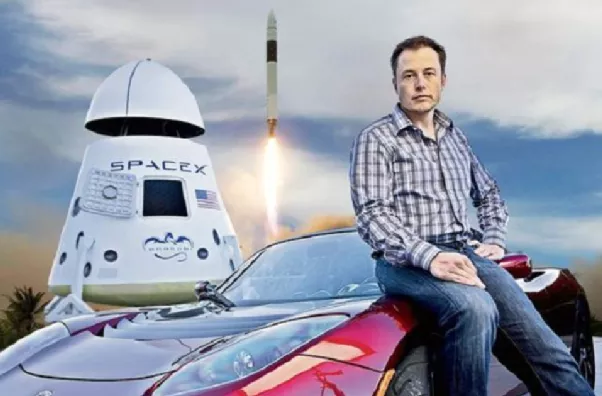Introduction
In May 2019, Tesla submitted a patent application named “Pulse Laser Cleaning of Debris Accumulated on Glass Articles in Vehicles and Photovoltaic Assemblies“. Recently, this patent has been officially approved by the US Patent and Trademark Office, which means that Tesla has obtained the exclusive invention patent.
The Algorithm behind the Small Wiper
According to Tesla’s description in the patent document, we can find that the essence of this patent is actually a cleaning system for vehicles. The basic working principle of this system is to locate the relevant debris and then control the intensity of the laser beam irradiated on the debris to remove it. So from the composition point of view, the laser wiper needs to include the optical components for emitting laser beams to illuminate the glass products on the vehicle, the detection circuit for detecting the debris accumulated in that area, and the control circuit.
For the entire system, the control circuit is undoubtedly the most important. It needs to detect and command the beam-related parameters emitted from the optical components to control the irradiation level of the laser beam on the accumulated debris by detecting the position and depth of the debris on the windshield. Of course, the irradiation intensity of the laser must also be less than the depth of the thickness of the glass product, so that the pulse can be used to process the debris on the windshield. Since the size and depth of the debris are different, this means that the control circuit and related algorithms need to have a relatively strong self-learning ability for self-calibration through various sensor signal feedbacks. In environments where the dust environment is more severe, how to balance the accuracy and speed of cleaning is also a test for the algorithm.
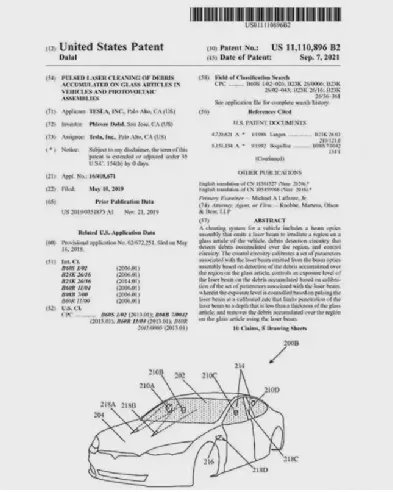
However, from Tesla’s description, we can find that this wiper is not a real wiper, but it is more used to eliminate various debris on the windshield. There is still considerable uncertainty about whether it can functionally work in heavy rain. If the laser wiper cannot remove the rainwater on the windshield, Tesla will inevitably be required to match a set of traditional wipers. Currently, everyone is speculating that this kind of laser wiper may be used first on Tesla’s most sci-fi Cybertruck. Because observant people have already discovered that traditional wipers were not found on the previously unveiled Cybertruck models.
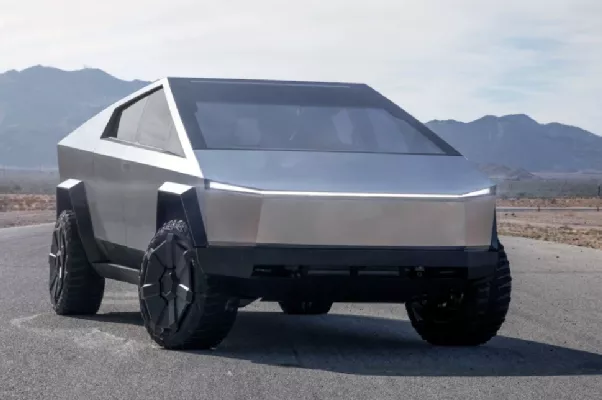 Before the laser wipers, Tesla’s electromagnetic wipers had already obtained patent authorization. As early as February this year, Tesla publicly released an electromagnetic wiper designed specifically for its electric sports car, Roadster. The principle of this wiper is to use electromagnetic methods to clean the moisture on the vehicle windshield, which can greatly improve the driving safety of the vehicle. That is to say, in the future, Tesla is likely to use laser wipers and electromagnetic wipers together to achieve the function of dust and water vapor removal.
Before the laser wipers, Tesla’s electromagnetic wipers had already obtained patent authorization. As early as February this year, Tesla publicly released an electromagnetic wiper designed specifically for its electric sports car, Roadster. The principle of this wiper is to use electromagnetic methods to clean the moisture on the vehicle windshield, which can greatly improve the driving safety of the vehicle. That is to say, in the future, Tesla is likely to use laser wipers and electromagnetic wipers together to achieve the function of dust and water vapor removal.
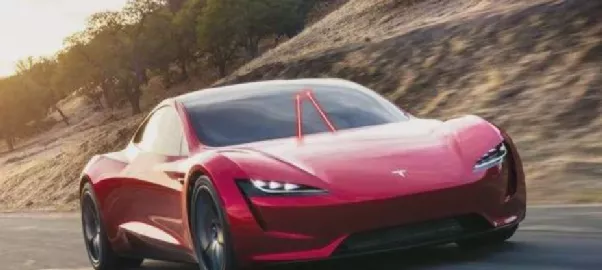
Space X kit to land on Roadster soon
However, compared to laser or electromagnetic wipers, Elon Musk previously mentioned that he hopes to use the rocket booster kit used on Space X on Roadster, and it is expected that the acceleration of this car from 0 to 100 km/h will be further reduced from 1.9 seconds to 1.1 seconds, leaving behind all the traditional supercars in our impression.
The moment when the Roadster bursts out with strong power and brings the feeling of being pushed back, which we usually only see in movies and TV shows, may soon appear around us. If flames can also be discharged, it will be even more exciting. For other automakers, it is almost impossible to find a cooperation partner with this technology among the existing supplier resources, unless they invest resources to develop this rocket jet, which will also establish another irreplicable core competitiveness for Tesla. By then, even if the price of Roadster is high, there will be many “money is not an issue” global buyers who will flock to it, willing to pay a high premium to enjoy that moment of extreme driving experience, and Tesla will undoubtedly achieve both fame and fortune again.
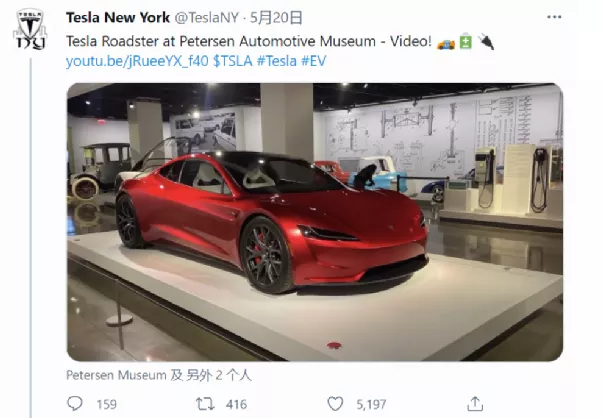
In addition, there are rumors that the Roadster plans to use SpaceX’s cold gas thrusters to achieve vehicle hovering, and CyberTruck can install solar panels on its rear cargo cover to directly increase its driving range. These are even more amazing than rocket boosters. Although these technologies are mature in principle, they still face many unresolved issues in the process of actual engineering application. But as long as technology iteration can continue, their engineering deployment on vehicles will not be so out of reach.
For Elon Musk, what captivates people the most about him is not the many whimsical ideas he has, but instead, his engineering capability to realize these fantastic ideas. Although the laser wiper system may not be as grand as previous projects like AutoPilot, Dojo supercomputer, Tesla’s humanoid robot, Starlink and SpaceX, from Tesla’s system perspective, its own ecosystem has already been established. Whether it’s the Tesla model utilizing other field’s technology, or Tesla’s robot using the full-scale AutoPilot technology, they are all excellent examples. In the future, Tesla is expected to bring us even more surprises!
This article is a translation by ChatGPT of a Chinese report from 42HOW. If you have any questions about it, please email bd@42how.com.
